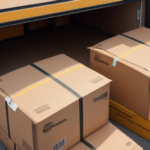Understanding Delivery Exceptions and Their Business Impact
Delivery exceptions occur when a package cannot be successfully delivered to the recipient, resulting in delays, additional costs, or returns to the sender. Common scenarios include incorrect addresses, recipient unavailability, and the need for additional information. According to the Statista report, incorrect addresses account for approximately 30% of all delivery exceptions. These issues not only increase operational costs but also negatively affect customer satisfaction and trust.
Businesses must recognize the significance of delivery exceptions to mitigate their impact. Effective management of these exceptions ensures timely deliveries, reduces costs, and maintains high levels of customer satisfaction, which is crucial for repeat business and brand reputation.
Importance of Accurate Delivery Information
Accurate delivery information is paramount for successful package deliveries. Incomplete or incorrect information, such as missing apartment numbers or incorrect street names, often leads to delivery failures. A survey by The Pew Charitable Trusts highlights that 25% of delivery exceptions are due to inadequate address details. Ensuring that both senders and recipients provide precise information can significantly reduce the likelihood of delivery issues.
Businesses should implement verification systems at the point of order to capture and confirm delivery details. Additionally, offering clear instructions and providing examples can help customers supply the necessary information accurately.
Common Causes of Delivery Exceptions and Prevention Strategies
Incorrect or Incomplete Address Information
One of the leading causes of delivery exceptions is inaccurate address details. To prevent this, businesses should:
- Implement address validation software during the checkout process.
- Encourage customers to double-check their address information before finalizing orders.
- Provide clear examples of correctly formatted addresses.
Recipient Unavailability
Packages often fail to be delivered when recipients are not available to receive them. Preventive measures include:
- Offering flexible delivery options such as evening or weekend deliveries.
- Allowing customers to choose specific delivery windows that suit their schedules.
- Providing secure locker options for unattended deliveries.
Weather-Related Delays
Adverse weather conditions like heavy snow, rain, or hurricanes can disrupt delivery schedules. To mitigate these risks, businesses should:
- Monitor weather forecasts and adjust delivery plans accordingly.
- Communicate potential delays to customers proactively.
- Develop contingency plans in collaboration with shipping carriers.
Tracking and Resolving Delivery Exceptions
Effective tracking systems are essential for identifying and resolving delivery exceptions promptly. Implementing real-time tracking allows businesses to monitor the status of shipments and address issues as they arise. AfterShip's report indicates that real-time tracking can reduce resolution times by up to 40%, enhancing overall delivery efficiency.
To resolve exceptions swiftly, businesses should:
- Establish a dedicated team to handle delivery issues.
- Utilize automated systems to notify both senders and recipients of exceptions.
- Facilitate easy communication channels for recipients to provide additional information or reschedule deliveries.
Communicating with Recipients Effectively
Clear and proactive communication with recipients is crucial when dealing with delivery exceptions. Businesses should ensure that recipients are informed about any issues and understand the steps needed to resolve them. Effective communication strategies include:
- Sending timely notifications via email, SMS, or phone calls to inform recipients of exceptions.
- Providing detailed instructions on how to supply missing information or arrange for redelivery.
- Offering multiple channels for recipients to contact customer support for assistance.
By maintaining open lines of communication, businesses can enhance the likelihood of successful deliveries and improve customer satisfaction.
Leveraging Technology to Streamline Delivery Processes
Technology plays a pivotal role in managing and preventing delivery exceptions. Advanced tools and systems can automate many aspects of the delivery process, reducing the chances of human error and improving efficiency. Key technological solutions include:
- Address Verification Systems: Automatically validate and correct address details during order placement.
- Real-Time Tracking: Provide both businesses and customers with up-to-date information on package locations and statuses.
- Automated Notifications: Send alerts and updates to recipients about their delivery progress and any exceptions that occur.
Implementing these technologies not only minimizes delivery exceptions but also enhances the overall delivery experience for customers.
Enhancing Customer Service to Mitigate Delivery Issues
Exceptional customer service is critical in resolving delivery exceptions and maintaining customer trust. A responsive and knowledgeable customer service team can address issues efficiently and turn a potentially negative experience into a positive one. Strategies for enhancing customer service include:
- Training customer service representatives to handle delivery exceptions effectively.
- Providing multiple support channels, such as phone, email, and live chat.
- Implementing a ticketing system to track and manage customer inquiries and resolutions.
Moreover, offering proactive support, such as real-time assistance and guidance during the delivery process, can significantly improve customer satisfaction and loyalty.
Minimizing the Impact of Delivery Exceptions on Business Operations
Delivery exceptions can disrupt business operations, leading to increased costs and strained resources. To minimize their impact, businesses should adopt a proactive approach by:
- Collaborating closely with shipping carriers to identify and address recurring issues.
- Analyzing delivery exception data to uncover patterns and implement targeted solutions.
- Investing in robust logistics infrastructure to handle exceptions efficiently.
By taking these steps, businesses can reduce the frequency and severity of delivery exceptions, ensuring smoother operations and enhanced customer experiences.
Conclusion
Delivery exceptions pose significant challenges for businesses involved in shipping services. By understanding the causes, implementing preventive measures, leveraging technology, and maintaining excellent customer service, businesses can effectively manage and minimize the impact of these exceptions. Staying proactive and continuously improving delivery processes will lead to increased efficiency, reduced costs, and higher customer satisfaction.
For more insights and strategies on optimizing your delivery processes, visit the ShipScience website.




















